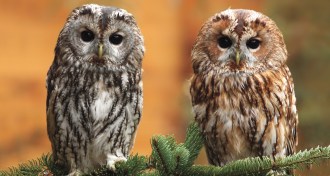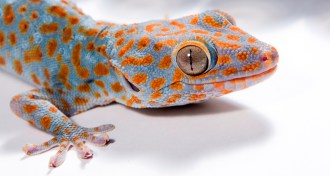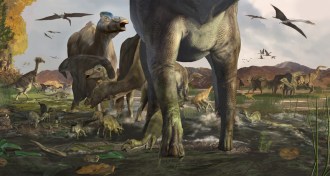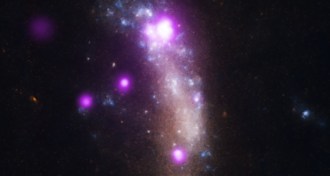Uncategorized
-
 Oceans
OceansSaharan dust explains Bahamas’ paradoxical existence
Windswept dust from the Sahara Desert may fertilize bacteria that built the Bahamas.
-
 Climate
ClimateHow species will, or won’t, manage in a warming world
Fast evolution and flexibility, in biology and behavior, may allow some species to adapt to a warming world. Others may need help from humans, or risk dying out.
-
 Cosmology
CosmologyLab version of early universe fails to solve lithium problem
An experiment that imitated conditions from just after the Big Bang failed to explain why observed amounts of lithium don’t match those expected from theory.
By Andrew Grant -
 Life
LifeMicroscapes take off at D.C’s Dulles airport
“Life: Magnified,” a display of microscope images depicting cells, microbes and details of life invisible to the naked eye runs from June to November.
-
 Environment
EnvironmentDecline in birds linked to common insecticide
In addition to harming bee populations, neonicotinoid insecticides may also be detrimental to bug-eating birds.
By Beth Mole -
 Life
LifeFiber optics in mammals’ eyes separate colors
Specialized cells in the retina separate different wavelengths of light to enable sharp vision during the day without harming night vision.
-
 Tech
Tech1960s research paid off in automotive safety
Scientists in 1964 were studying shatterproof glass, which was mandated just a couple of years later.
-
 Health & Medicine
Health & MedicineTwo genes clear up psoriasis and eczema confusion
Psoriasis and eczema are often mistaken for each other, leading to mistreatment. Testing just two genes could eliminate this confusion.
By Nsikan Akpan -
 Life
LifeGecko adhesion takes electric turn
Challenging a favored theory, measurements suggest that electrostatic interactions make gecko feet supersticky.
By Nsikan Akpan -
 Paleontology
PaleontologyDuck-billed dinosaurs roamed the Arctic in herds
Young and old duck-billed dinosaurs lived together in herds in the Arctic, tracks preserved in Alaska indicate.
By Meghan Rosen -
 Astronomy
AstronomySupernova rapidly creates dust between stars
Astronomers watch a shell of dust form within weeks of a star’s explosion.
-
 Paleontology
PaleontologyFossils reveal largest airborne bird
Despite its massive size, an extinct bird may have been an efficient glider.